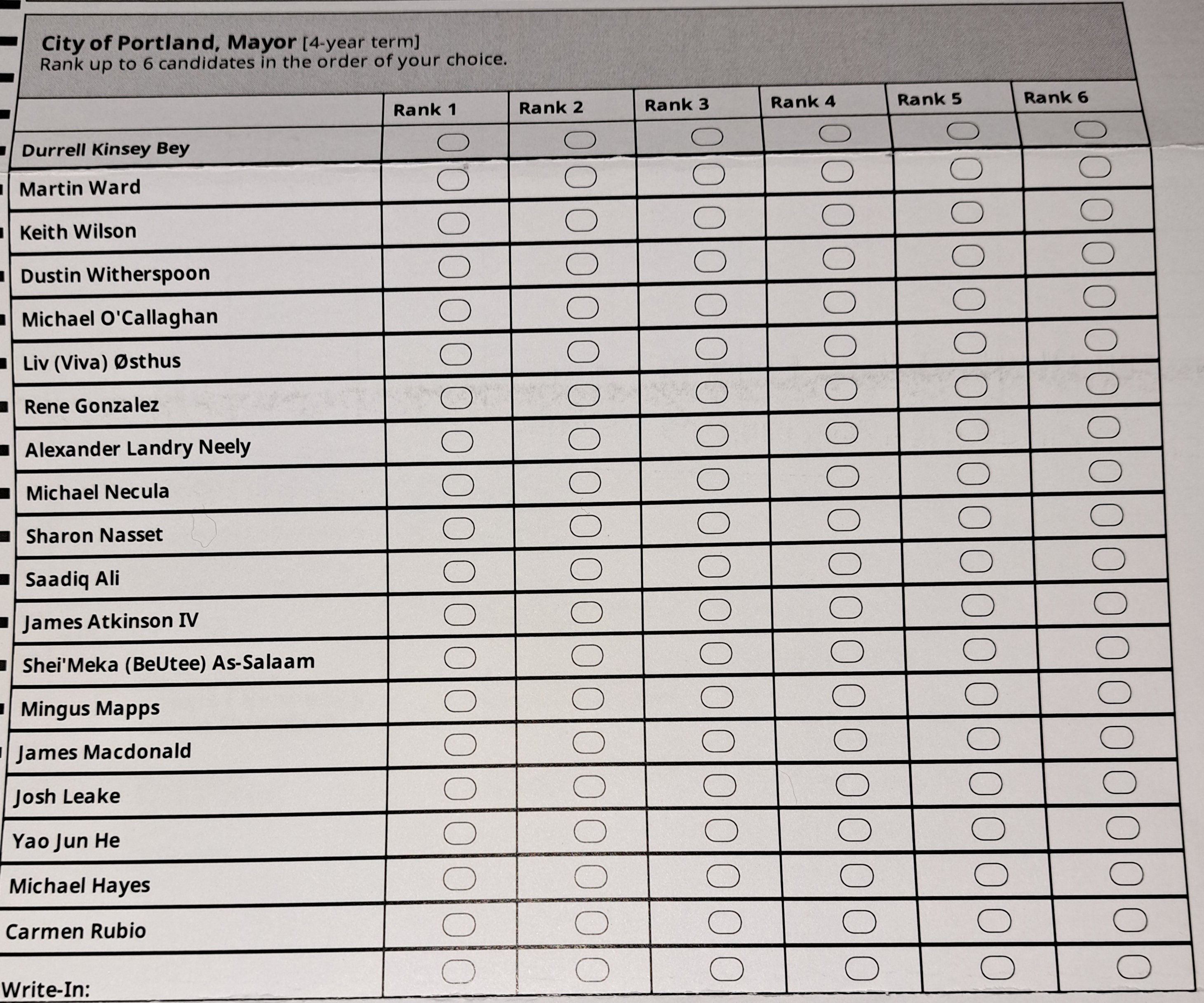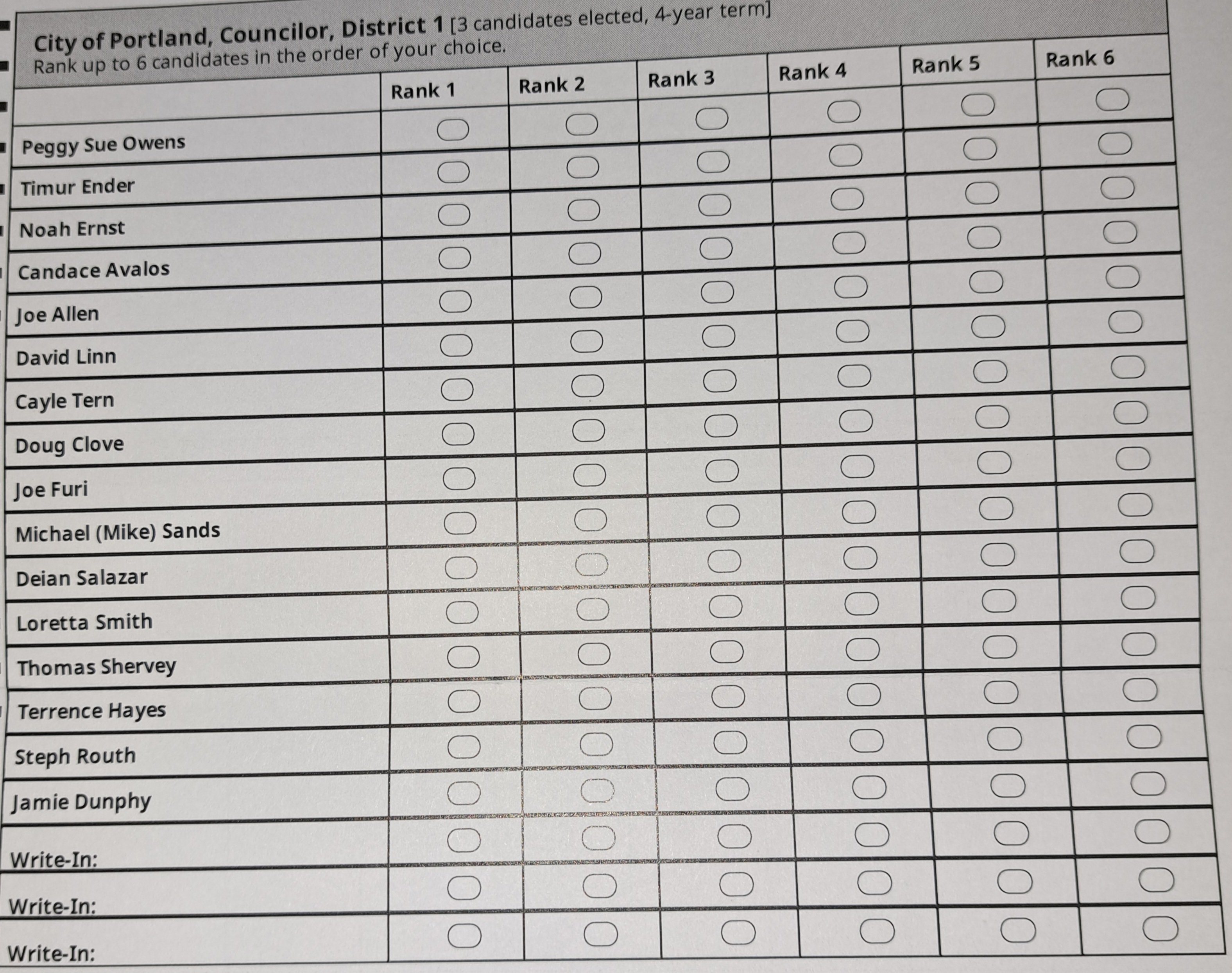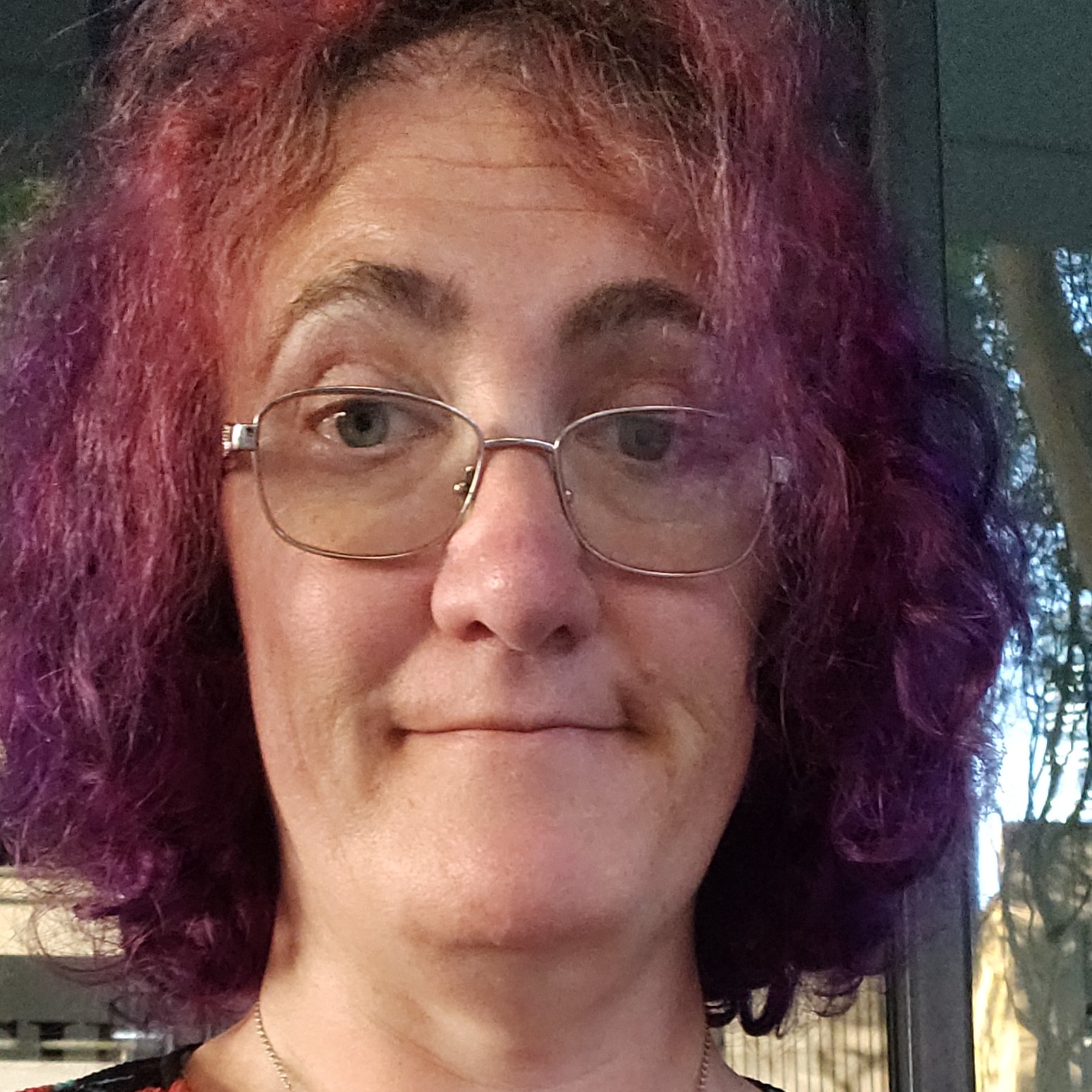Ballot in question:
Mayor:

District 1:

That looks like it was designed to fail.
Yeah, this reeks of “flooding the zone.”
I guess I don’t understand why this is such a difficult concept to understand.
Pick as many or as little candidates you want for the position and then rank them.
If you are wanting to phone it in just vote for the one candidate like the old system.
Removed by mod
deleted by creator
Wonder how many people got to this page on their ballot, then immediately changed their vote on 117 to “no”.
Good question…
Statewide:
No - 1,146,650
Yes - 826,823The Wiki shows Mulnomah County voted for it by 50-60%, but I don’t see a source for it.
https://results.oregonvotes.gov/ResultsSW.aspx?type=CTYALL&cty=26&map=CTY and click “Local Results For State Contests”
56.8% (213,693) Yes / 43.2% (162,466) No
so not as big of a change as I thought. But I guarantee it made a difference, because if I saw that bullshit above on my ballot i’d be very inclined to vote against doing it again.
big brain time
In east Portland, the city’s poorest and most racially diverse quadrant, a combination of low voter turnout and low rates of ranking even a single City Council candidate by voters who did cast ballots meant only 39% of registered voters had any say in which three candidates will represent the district, the newsroom analysis found.
I wonder if voter turnout was below, about even, or above the average for the last 20 years. And then what percentage of registered voters had a say in those. Hopefully, the city council and ranked choice voting advocates will do some outreach.
In the district encompassing Portland east of Interstate 205, 29% of residents who cast ballots didn’t rank any of the 16 candidates running. That figure was 18% in North and Northeast Portland (22 candidates); 17% in Southeast Portland (30 candidates); 17% in the city’s westside district (30 candidates); and an average of 20% citywide. Only 7% of voters who cast ballots in the November 2022 election sat out the highly polarized City Council runoff between Jo Ann Hardesty and Rene Gonzalez. And 13% did in the fall 2020 contest between Chloe Eudaly and Mingus Mapps.
In a linked article:
The portion of Portland east of Interstate 205, home to nearly a quarter of the city’s population and its least economically advantaged stretch, had just two residents elected to the council in all of city history.
Now it’s five. This isn’t an excuse to not do outreach, but this shows far more directly that the people from their neighborhoods are representing them. I hope council members will do community building events.
The difference is, prior to this election, city council seats were chosen in city wide elections.
Now each of the four districts are guaranteed 3 seats. That’s the #1 reason we voted to change our system of government.
But you can’t look at prior elections because those didn’t work the same way, the districts didn’t exist then.
So, in 2020, one council seat was up for election:
https://www.portland.gov/auditor/elections/city-election-results/2020-city-elections-results
Mingus Mapps - 187,386 - 55.59%
Chloe Eudaly - 146,399 - 43.43%
Write-In - 3,376 - 0.97%
Total Votes Cast - 337,061 - 100.00%So across the entire city, 337,061 votes cast.
In 2024, if you total up all the votes for all the candidates in Districts 1-4…
https://www.portland.gov/auditor/elections/city-election-prelim-results
Looking just at the first round of voting assuming 1 vote per person equals the most accurate count of total votes:
District 1 - 23,189 votes across 16 candidates + write ins.
District 2 - 41,908 - 22 candidates + write ins
District 3 - 46,039 - 30 candidates + write ins
District 4 - 45,044 - 30 candidates + write ins
Total votes, all candidates, 156,180So that’s 46.33% of the votes of the 2020 election.
Here’s a link to an Argis map. You can turn on the layer for current districts and the select the election turnout for 2020.
Here is a link to the 2020 vote count by precinct. Using the Argis map, I’d like up the District 1 precincts and then compare it to the the argis map to see which ones are in district 1. Too bad the file is a image based PDF and not a CSV.
Any case, it’s doable.
Personally, I’m most interested in getting District 1 turnout to increase.Definitely! 25% of the population, but only 14% of the overall vote.







